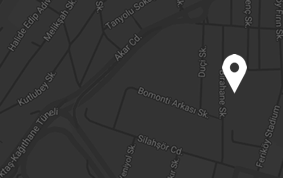Hermes sandals restoration cost Is Repair Worth It
posted Eyl 14 2025
Hermès sandals restoration cost: is repair worth it?
Short answer: sometimes — but only if the repair protects value, fixes structural damage, or has sentimental payoff that justifies the spend. Hermès sandals have premium materials and resale expectations; that changes the math compared with generic sandals.
Hermès models like the Oran, Izmir and Oasis are built from calfskin, lambskin or grained leathers and rely on clean finishing, edge glazing and precise stitching. When a strap frays, a sole thins, or the dye rubs off, the visible damage erodes both function and the product’s perceived luxury. Deciding whether to repair comes down to three practical questions: how severe is the damage, what parts must be replaced, and where will you have the work done — an authorized Hermès after‑sales service or an independent cobbler. Those variables move the cost from modest to significant and change whether repair preserves or destroys value.
If you own a pair that’s collectible, limited or difficult to replace, repair is more likely to be worth it. If the sandals are heavily worn beyond structural function or the restoration cost approaches what a well‑kept secondhand pair sells for, replacement or resale is often the smarter route. Below I break the numbers down, explain what a full restoration involves, https://www.oransandals.com/ and map outcomes so you can make a clear, defensible decision.
How much will key repairs actually cost?
Typical repair items fall into clear price bands: minor touch‑ups and protective work are inexpensive; structural repairs and original‑material replacements cost several hundred dollars; full Hermès boutique restorations are the priciest and can exceed the value of low‑tier pairs.
The table below shows realistic industry ranges for common repairs, reflecting quotes from independent cobblers, leather workshops, and luxury after‑sales services. Expect variation by location, leather type (calfskin costs more than lambskin to match), and whether original hardware or Hermes‑specific parts are required.
| Service | Independent Cobbler (USD) | Hermès After‑Sales / Boutique (USD) | Turnaround |
|---|---|---|---|
| Sole protector / rubber half‑sole | $30–$90 | $60–$150 | 2–10 days |
| Edge glazing and re‑dye | $40–$120 | $80–$220 | 5–14 days |
| Strap restitching / reinforcement | $50–$180 | $120–$300 | 7–21 days |
| Replacement leather panel / strap | $80–$250 | $200–$500+ | 2–6 weeks |
| Full restoration (clean, re‑dye, sole, edges) | $180–$400 | $300–$800+ | 3–8 weeks |
These figures are conservative aggregations: high‑end Hermès service sometimes charges more for sourcing exact leathers or replacing embossed components. For rare colors or discontinued leathers, expect lead times and premiums. Always ask the shop for a written estimate that lists parts, materials and whether they use Hermès‑authorized replacements.
What does a full restoration actually include?
Short answer: a full restoration restores structure, finish and protections — that means cleaning, dye correction, edge glazing, re‑soling or sole protection, stitching repairs and hardware servicing where needed.
In practice, the technician inspects upper leather for delamination, checks stitching tension and integrity on the strap anchor points, measures remaining sole thickness, tests adhesives, and evaluates the original dye. Cleaning removes dirt and oils; dye correction addresses color loss caused by sun or wear; edge glazing re‑seals the cut edge of leather for a crisp Hermès‑style finish; re‑soling installs a new leather or rubber sole or a protective half‑sole; and replacement straps or hardware is used only when repair is unsafe or aesthetically impossible. Each of those steps requires materials matched to the original — calfskin, lambskin or grained leather — and that matching drives cost. A genuine boutique restoration will aim for factory aesthetics, while an independent cobbler will prioritize function and visual harmony at lower cost.
Structural repairs (strap anchors, reinforcements) are the most important for wearability. Cosmetic fixes (surface scratches, scuffs) are cheaper but don’t address failure points. If seams have opened or the strap base is thinning, skipping structural repair only postpones inevitable, larger expense.
Where should you get Hermès sandals repaired?
Short answer: use Hermès after‑sales for authenticity and resale value preservation; use a skilled independent cobbler for lower cost and faster turnaround, but choose specialists experienced with luxury leathers.
Hermès after‑sales service has the advantage of sourcing original parts, exact color matches and factory‑grade processes. That generally preserves resale value and returns aesthetics close to new, but it’s the most expensive path. Independent cobblers can produce excellent results for less, particularly for sole work, edge glazing and structural stitching, but outcomes vary by technician. Look for a leather specialist who routinely services luxury brands, ask for before/after photos and references, and verify they use fine adhesives and thread compatible with soft calf or lambskin — cheap glue and heavy thread ruin thin Hermes leather.
DIY is tempting for small scuffs or adding a rubber half‑sole, but leather dyeing and edge glazing are skill tasks. A bad DIY dye job or overzealous glue will be irreversible and reduce value. For anything beyond a sole protector or a light cleaning, professional service is the safer bet.
Restoration versus replacement: which saves more money?
Short answer: choose restoration when repair costs are substantially below replacement value and when the pair has non‑monetary value; choose replacement when repair approaches the market value of a clean secondhand pair or when structural failure is extensive.
Practical cost math: if an Oran in decent condition sells used for $400–$700, a $300 boutique restoration may be justified to command top resale or to keep a beloved pair. Conversely, if your worn pair would fetch $100 on resale, spending $250 on full restoration makes little economic sense unless sentimental value dominates. Also factor in replacement availability: limited edition colors or discontinued leathers increase the value of repair because replacement is impossible or costly.
Longevity matters. A correctly performed restoration extends service life by years: new soles, reinforced anchors and proper edging prevent recurrence. Cheap fixes can accelerate damage and produce recurring costs, making them a false economy.
Little‑known but verified facts about Hermès sandal repair
Fact 1: Hermès uses different dye recipes for different leathers; a calfskin match is not the same as a lambskin match, and a visible mismatch lowers perceived value even if the repair is structurally perfect.
Fact 2: Edge glazing requires specific heat, compound and buffing; many quick shops use solvent‑based substitutes that crack in months, while proper glazing lasts years.
Fact 3: Replacing soles with branded or factory leather is often more expensive than a rubber protector because leather soles require hand‑lasting and edge finishing techniques that few general cobblers master.
Fact 4: Some authorized services will refuse to work on sandals altered by previous improper repairs; that can force an owner to seek a specialist capable of reworking past mistakes, which increases cost.
Expert tip
\”Don’t let a cheap half‑repair become the reason you pay triple later. Always get a diagnostic estimate that separates cosmetic from structural work. If a cobbler can’t explain anchor points, stitching method and the exact leather they’ll source, walk away.\” — a veteran leather restorer
That advice protects you from common errors: accepting a flat rate without itemized tasks, or assuming that surface color correction fixes structural weakness. A transparent estimate permits comparing shop skill and pricing apples‑to‑apples.
Final assessment: when repair is worth it
Short answer: repair Hermès sandals when the work protects structure, preserves rare or sentimental pairs, or when the restoration cost materially improves resale value; skip expensive cosmetic-only work if it approaches replacement cost.
Decide by balancing three variables: remaining life (sole thickness, strap integrity), rarity and sentimental value, and cost vs replacement/resale. For any Hermès sandal, an independent luxury‑leather cobbler will save money and often deliver excellent results for soles, stitching and edge work. For color matching, rare leathers or warranty preservation, Hermès after‑sales is the safer choice. Always insist on an itemized estimate, before/after photos, and a clear timeline — those are the signals of a professional who understands luxury repair.
If you want a concrete next step: document the damage with photos, get two itemized estimates (one Hermès, one reputable cobbler), and compare each estimate to the market price of comparable secondhand pairs in good condition. That comparison turns emotion into a rational decision and keeps you from paying for fixes that won’t meaningfully extend wear or value.



